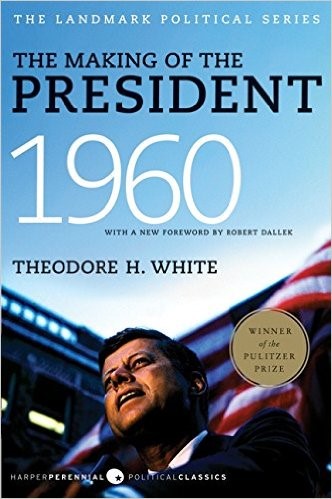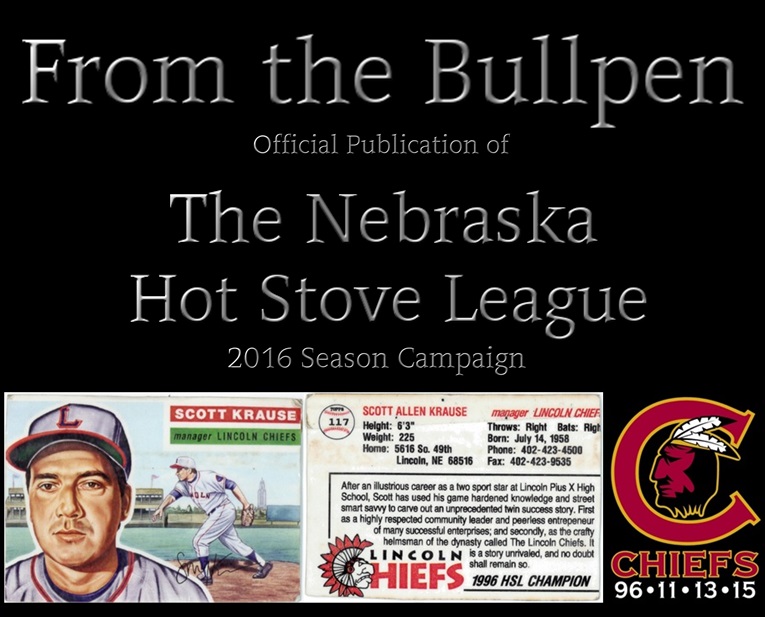|
Baseball Brethren:
Just a short little edition of FTB which I am dictating while
on assignment to Palm Desert for an expert witness deposition.
No baseball to be had out here on the Left Coast in late October, so
let’s instead talk about the Cubs and the Indians, the combatants in
the current 112th playing of the World Series.
I’m sure most of you have read some of these same storylines, but
they’re worth repeating:
|
* |
When the Cubs last won the World Series in 1908 (topping the
Detroit Tigers of Ty Cobb and Wahoo Sam Crawford for the
second straight year), Teddy Roosevelt was serving out the
last of his 7-1/2 years in office. The Boy Orator of the
Platte, Nebraska’s own William Jennings Bryan, was only
about a month away from suffering the worst loss in three
presidential campaigns to Republican William H. Taft. While
Nebraska was then a blue state and pledged all of its 8
votes to Bryan, Taft won the popular vote by more than a
million votes (7,678,908-6,409,104) and nearly doubled up on
Bryan with electoral votes (321-162).
In 1908, Lincoln’s own Roscoe Pound left the law faculty of
the University of Nebraska Law School, and took a job on the
law faculty at Northwestern, one of several stops on the way
to becoming Dean of the Harvard Law School from 1916-1936.
It is unknown whether he was at Wrigley Field for any part
of the 1908 World Series.
|
|
* |
In 1908, the average wage in America was 22¢ per hour. A
loaf of bread was 5¢, a stamp 2¢, and a gallon of gas 11¢.
An average car cost $800 in 1908, although Henry Ford’s
first assembly line vehicle was still almost five years off
in the future.
|
|
* |
After losing to the crosstown White Sox in 1906 and then
winning it all in 1907 and 1908, the Cubs began their
current skein of failures. While they made it back to the
Series seven times between 1910 and 1945, they lost each and
every one of those contests, and only in 1945 (against the
Detroit Tigers) were they even able to extend the Series to
seven games.
|
|
* |
When the Cubs last went to the World Series in 1945 at the
end of World War II, St. Louis was the westernmost outpost
for the Major Leagues.
|
|
* |
The Cleveland Indians haven’t fared much better over the
years. From 1903 to 1954, they only made it to the World
Series three different times, winning it all in 1920 with a
5 games to 2 victory over the Brooklyn Robins; capturing the
crown in 1948 with a 4-2 edge over the Boston Braves; and
then being swept by Willie Mays’ 1954 New York Giants 4-0.
The Indians didn’t make it back to the Series after that
until 44 years later in 1995 when they lost to the Atlanta
Braves by a tally of 4-2, and then in 1997, when they lost
to the Florida Marlins after being only 3 outs away from
taking the title.
|
BOOK REPORT:
THE MAKING OF THE PRESIDENT 1960

With one of the craziest campaigns and elections in our lifetimes
now winding down in front of us, it is a good time to recommend the
reading of perhaps the best book about politics and elections that I
have ever read, the Pulitzer-prize winning classic The Making of
the President 1960, by Theodore H. White. This book is an
absolutely riveting recounting of the battle between the Kennedy
campaign team--mostly his family and college friends--and the old
guard Republicans who were trying to elect Richard Nixon at the tail
end of his Vice Presidency during the Eisenhower administration.
To whet your appetites, here are a couple of my favorite passages:
For the Lyndon B. Johnson of 1960, however astute
and familiar with the affairs of Washington, presented
himself nationally as something essentially provincial.
To watch Lyndon B. Johnson perform oratory on his native
heath is to see something like an act out of a show-boat
production. He normally begins in a grave, serious
tone, strictly out of Washington. Then, as his fists
clench, flail and thrash the air, his voice changes. It
roars like a bull’s; it drops to a confidential
resonance; all texts are discarded, and the flavor of
the slow drawl, the snapped phrases, the smirked
confidences are never recaptured in the printed text.
His face, which is, with the exception of Eisenhower’s,
the most mobile and expressive in national politics,
seems a wad of India rubber, his mouth draws tight in
anger, opens wide in a bellow of indignation, sucks in
about the corners as he ruminates aloud, turns up in a
great smile after the joke, turns down in sorrow as he
wails of the nation’s problems. When Lyndon B. Johnson
is in good form and seen in the proper setting—say, at a
small-town Masonic temple at a dinner for small-town
Southern Democrats where the hot food is being served by
the good Ladies of the Eastern Star—one can observe a
master performance of native American political art.
Yet when the same performance is transferred to a dinner
of Brooklyn Democrats, say, in New York, or is delivered
on television, it has no smack of Presidential quality
about it. It is, sadly, what is called in the cynical
North and the citizen West “cornball”—and as remote from
the dignity of the Presidency as was Alfred Smith’s bad
grammar, East-side enunciation and New York
provincialism.
* * *
One could learn much from a day like the day that
followed as the Nixon cavalcade crossed into Iowa.
All day, from morning until late evening, the
cavalcade moved across the plains toward the
Mississippi—from Council Bluffs to Red Oak to Atlantic
to Guthrie Center to Dalles Center to Des Moines, and
the cornland was approaching harvest. As soon as one
crossed the Missouri the corn greeted the eye, two weeks
from ripening, darkening from the top down. The tassels
had already browned, and the leaves were yellowing but
still rich green as the stalk reached to the earth.
Corn as far as the eye could see rolled and billowed on
the ripples of Iowa’s rich earth, swelling and falling
in waves of green, tossing a foam of brown cornsilk.
After a while the eye grew tired of corn and began to
notice what was not corn—occasional stands of umber
sorghum heads; dark ivy-green patches of soybeans; the
upsweep of a slope on which the cubes of baled hay lay
dotted like yellow dominoes on the green of meadowland;
the glistening yellow or red or green of farm machinery
in the fields; a copse of trees that marked the line of
a brook or river running through a flat. But as the
afternoon wore on to dusk, the corn was still there, and
the eye realized that it had been seeing only corn all
day long, 125 miles of corn from the Missouri to Des
Moines, and beyond Des Moines lay 150 more miles of
nothing but corn; the immensity of it overpowered one.
For this was the greatest food-producing civilization in
history, and Iowa, in the summer of 1960, had planted
more acres to corn than ever before in its history and
would harvest 740,590,000 bushels in the next two weeks;
the aluminum bins and towers that one saw everywhere
were already full of surplus grain, but they must hold
more; and this immense productivity was a blessing for
which all the rest of the world yearned, while here in
Iowa the plenty was almost a curse. All of it had been
produced under no government plan, with no compulsion,
by these sturdy, handsome people; and with these people,
in these small towns, in the sun, Richard M. Nixon was
thoroughly at home.
If anyone wants to borrow my dog-earred and marked-up copy of this
splendid read, please let me know and I will be happy to comply.
AN HSL DAY AT THE LINKS
Thanks again to Big Johnny and Magpie for hosting our now-annual
post-season gathering last Sunday afternoon at Shadow Ridge, where
the fivesome of J.T., Magpie, Possum, Big Guy and Skipper enjoyed
one of the finest October afternoons of all time. While the course
record is still safe, the HSL boys thoroughly enjoyed their tour
around the course, and as well the lively conversation which
followed in the clubhouse, no doubt enhanced by the free-flowing
adult libations sprung for by Foster.
Yet another great day to be alive and a member of the Hot Stove
League.
TRIP 2017
In an effort to bolster our attendance at next year’s HSL Trip, I
implore you now to block off your calendars for the weekends of June
2-4 and 16-18, for an HSL Trip to an undisclosed destination, but
one which will be financially and logistically doable for all 13
members of the league. Do it, now!
And that’s it for this issue. Next week, I will be laying on a
beach someplace way south of here, lapping up frothy beverages of a
highly intoxicating nature. Olé!
Skipper
|

